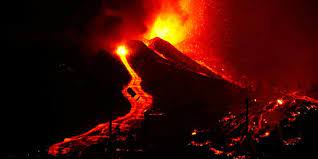A Year On, Volcano Scars Mark Spain's La Palma Island
 |
| Image Credit: Insider |
The three-month-long volcano eruption that destroyed many people's lives even though it resulted in no fatalities has left a six-kilometer black lava scar on Spain's La Palma island.
The Spanish island in the Canary Islands archipelago off the northwest coast of Africa is not the same geologically, economically, or socially as it was on the first anniversary of the beginning of what was one of the most widely watched volcanic eruptions of the century in Europe.
Around 3,000 buildings, numerous banana plantations, roads, and irrigation systems were buried beneath the thick slab of molten rock that was still slowly cooling down from its initial 1,140 degrees Celsius (2,084 degrees Fahrenheit) temperature.
Tourism is crucial to the island's economy, along with agriculture. However, due to the presence of poisonous gases, half of the 8,000 registered places of accommodation are still closed, which is the same reason why about 170 locals are still staying in hotel rooms.
Local newspapers refer to Puerto Naos, a former tourist destination, as a ghost town. Although the town was not affected by the lava, its 1,000 residents were forced to leave due to the high CO2 gas concentration. The majority are staying with relatives, and they are all still unsure of when they will be able to return home.
La Palma, with a population of 84,790, has drawn the attention of numerous officials and politicians. The island has been visited 60 times by members of the cabinet, including the prime minister Pedro Sánchez, typically to announce fresh aid initiatives. Recently, Queen Letizia picked La Palma for her yearly trip to a school at
the start of the school year.
the start of the school year.
The government has provided 566 million euros ($564 million) in public funds to aid in reconstruction.
However, a group of those who were impacted by the volcano plans to protest on Monday in retaliation for what they see as poor fund management.
Others object to the fact that solidarity vanished when the volcano's roar subsided after 85 days.
Banana farmer Juan Carlos Rodriguez claimed, "Politicians don't really care about us." He claimed that the subsidies weren't enough.
However, some business owners are developing strategies to restructure their enterprises and profit from the eruption.
On clear Canary Island nights, AstroLaPalma used to host stargazing events. Owner Ana Garca currently leads astonished tourists through the volcanic ashes.
Prior to its eruption, the volcano went by the name of the nearby national park, Cumbre Vieja, but had no official name. Residents of the island decided this summer to refer to it as Tajogaite, which is the name of the region in the historic Guanche language.
The volcanic islands are entering a new era, and the inhabitants are motivated to prosper.
With the opening of a new road constructed over the lava rock to connect the sides of the Aridane Valley that were divided in two by the eruption just two months ago, the islanders were able to declare a minor victory over the volcano.
The road reduces travel time to remote homes by two hours, shortens children's commutes to school, and provides access to the valley's last remaining banana plantations.
